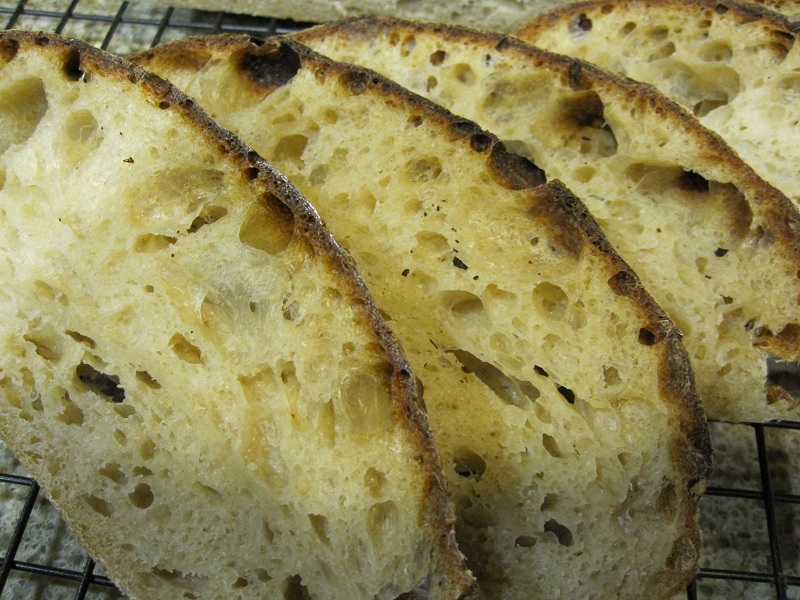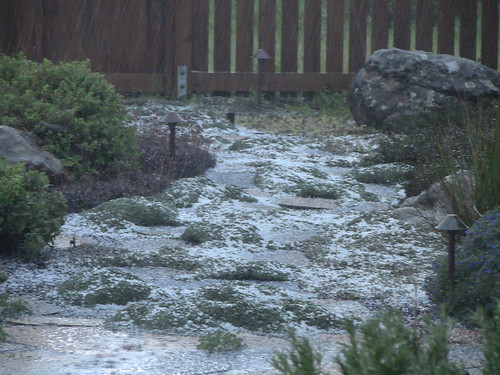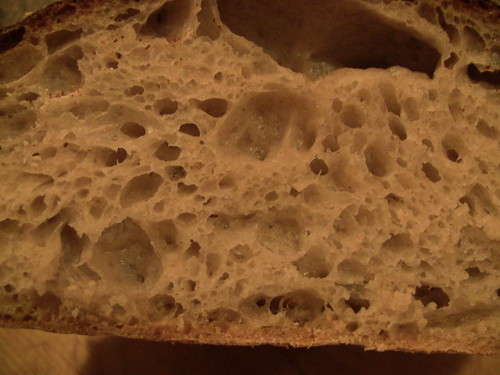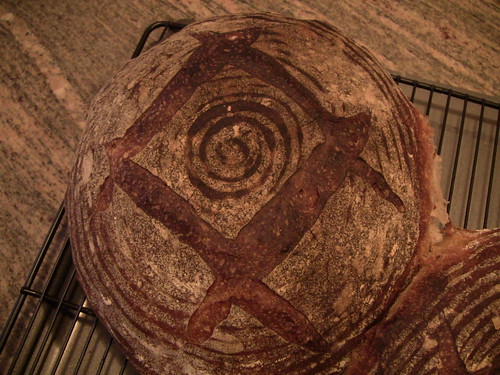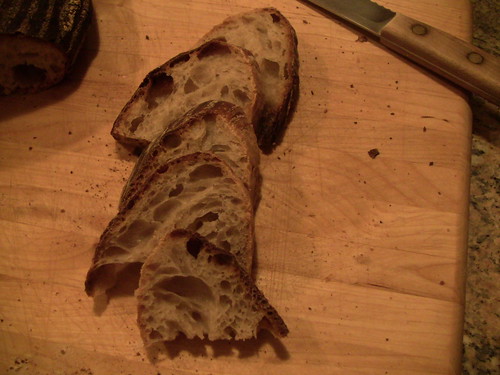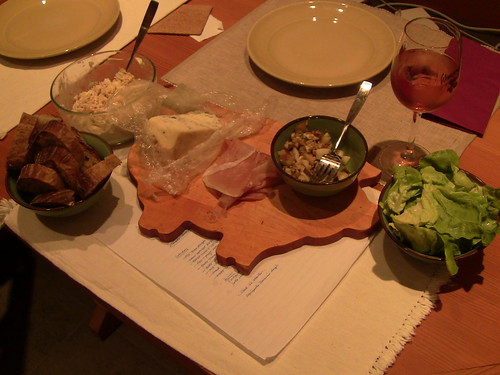
Tartine bread has been quite a quest, first in San Francisco, CA., and then here in my lovely little casa, where I basically toiled 25 hours for my two loaves of the basic Tartine country bread. Let’s start the discussion with San Francisco, CA.; two months back when my wife and I were on vacation to that part of the world, we decided to visit some local bakeries there. Tartine bakery in the Mission district was one of the places we had decided to go. Unfortunately, when we did arrive there, we were told the loaves didn’t come out of the oven by 5pm, and then too there was no assurance if one would get anything or not. Personally, I was a little mystified by the person on the counter, who offered me no pledges even if I stuck around the area till 5pm. Evidently, later through my google searches and endless hours of browsing through the world wide web, I came to know that evidently the new policy of Tartine was that one had to call three days ahead to reserve any bread.. What kind of a bakery is this that even though you may stand long hours waiting outside there is no guarantee of a loaf; obviously there seems to be a problem. My reaction to that was in some ways similar to the SF Weekly’s Jonathan Kauffman, “screw all of you cult-of-Tartine members who use your insider knowledge to screw walk-in customers out of one little loaf of bread.” At least, I am not the only one grunting on my bad luck with Tartine.

To read more on Kauffman’s Tartine bread quest/grunt go here: http://blogs.sfweekly.com/foodie/2010/04/sf_rising_tartines_purported_s.php

Personally, I was a little more than disappointed at Tartine, because in my quest to get loaves from Acme or even Linguria Bakery in North Beach, I didn’t have any major issues. I mean sure on December 24th, I stood 3 hours outside Linguria Bakery, starting at 8 am, to get some of their delightful focaccia, but at least I didn’t go back empty-handed.
A couple of months post my major disappointment at Tartine bakery, I eventually got a hold of their bread book in my library. In some ways, I thought this would be the perfect solace to my disappointment at their bakery. Perhaps, by baking the Tartine bread at home, I may be able to taste what exactly their bread feels/tastes like.

And so, eventually, on Feb 17th at 11.45pm, I started building its leaven. Now, the Tartine leaven asked for a tablespoon of the mature starter, alongside 200 grams of water with 200 grams of 50/50 flour blend (bread flour/ whole wheat flour). In a perfect world, now that I look back at it, I should have fed the starter to make it more active and bubbly. For it probably had been close to 3 days since I had last fed it. Perhaps, I was just little tired. Anyways, building the leaven process in the Tartine bread book suggested to leave it overnight. In the morning around 8.45am, I checked to see the leaven and it wasn’t all bubbly. So I dropped a spoonful of it into the bowl of water, to see if it was actually floating or not? Unfortunately, like Titanic my spoonful of leaven sunk too. This was a bad omen, because if the leaven had fermented perfectly, it would have floated, so I decided to increase the temperature of my proofer and kept the leaven there for 3 hours more. Post the 3 hours of wait, I did experiment the same thing, however, this time the results were positive.

The next step was to dissolve the leaven in 700 grams of water, and then gradually add the 900 grams of white flour and 100 grams of whole-wheat flour and bring it together by mixing with bare hands. After that the dough mixture was left to rest for 25 minutes, to what Professor Raymond Calvel (Julia Child and Simon Beck’s teacher for the bread chapter of Mastering the art of french cooking, Volume 2) termed the autolyse.

At the end of the resting period, 20 grams of salt and 50 grams of water were added to the dough mixture. It is after this step where I perhaps created my biggest blunder for the Tartine bread. After combining the salt and the second batch of water was the beginning of the bulk fermentation period for 3 to 4 hours. This is where I forgot to read further instructions, which clearly stated to fold the dough every 30 minutes. So after about 3 hours at 3.30 pm, when I actually did read further, I realized my blunder. So to make that up, in the next hour between 3.30-4.30pm, I actually folded the dough four times, at the interval of 15 minutes. Then in the period from 4.30 to 5.20pm, I folded twice again, at that point of time, I thought I could take out the dough and continue further, that is when disaster struck. The dough just came out as a beast from the sea and took over my wooden cutting board, and like the old man at the sea, I vigorously tried to scoop it with my scraper and tame it. Unfortunately, I couldn’t, clearly the gluten structure had not developed in the dough. So I put it back from where it came, in the glass bowl, and let it ferment for 2 hours more, folding it every 30 minutes. In the mean time, I jumped onto YouTube and started feeding myself with videos on working with higher hydration dough. I would say this procedure did help somewhat, because when I went back at around 7.20pm even though the dough was quite wet, I could work my way through to build two pancake like structures, which were left for 20 minutes on the cutting board.

Eventually, the time came to do the final shaping of the dough—though, in my case, not exactly. For after 3 hours of final proofing, when I tried to take out the dough, it was still quite wet and sticking to my proofing basket cloth, even though I had plenty of flour in there. Somehow, I managed to take the dough out of the basket-however, it had almost gone flat, so I had to shape it again- one last time, before I put it on parchment paper and scored it and then lifted it into the Dutch oven. By the time I put my first bread in the Dutch oven, it was 10.30pm and by the time, I got to bake my second bread and clean the kitchen it was about 12.30 pm. Since, the loaves were still cooling, I decided to cut the bread the next day and waited with breath abated.
So the following day, I decided to have some of my Tartine bread with good old butter and some Thimbleberry jam, which a friend of mine got me from Michigan. I would definitely recommend this jam to all the jam lovers; in fact you can even order it online at www.thimbleberryjamlady.com/store/. Now, coming back to my bread, the crust and crumb were quite decent. The crust as I have previously, repeatedly said, in a home oven the best crust can only happen in a Dutch oven. The performance of the crumb was quite delightful. The wife was also pleased that the bread had a sour note to it. I am guessing my overnight leaven build, did help accommodate the sourness to it. Looking back on thefreshloaf.com, I thought a lot of the members had varied feelings about the Tartine country bread. Some thought the recipe was just too long, which I can understand to a point, but then you tend to indulge in a lot of fine details that only helps you improve the overall performance of the bread.












